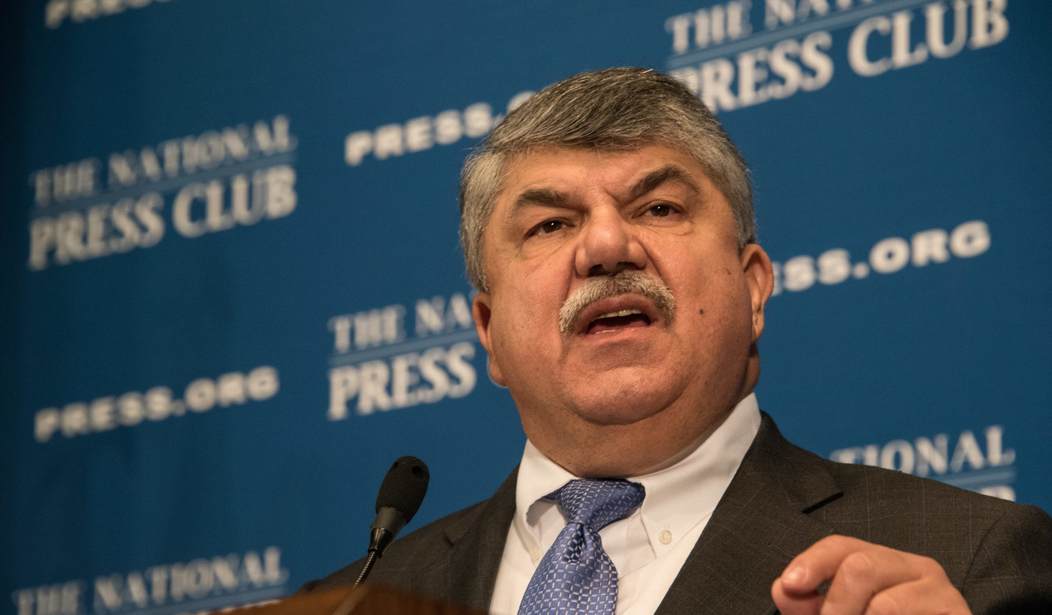It’s official — union bosses make more money than chief executives. According to an explosive new report, labor presidents enjoyed a $60,000 advantage over private sector CEOs. And yet, big labor is attacking chief executives for taking advantage of their employees.
Union leaders earned an average salary of $252,370 in 2016, according to a new report from the Center for Union Facts. The center compiled salary information from federal labor filings from 192 of the largest national, state, and local unions. According to the Bureau of Labor Statistics, business leaders only earned an average of $194,350 — almost $60,000 less than union bosses, the Washington Free Beacon’s Bill McMorris reported.
When other perks were taken into consideration, union officials took home an average of $283,678.
For instance, Airline Pilots Association President Timothy Canoll was the highest-paid union leader, taking home a total compensation of $775,829, with benefits added on top of his base salary of $526,292. The union gave Canoll about $250,000 in perks, including $24,000 in allowances and $29,000 in official business expenses including things like meals and entertainment. And there’s the $196,534 in compensation classified as “Other.”
The Center for Union Facts report didn’t come out of a vacuum. It was intended to rebut the AFL-CIO’s annual Executive Paywatch report, which highlighted the disparity between CEOs and their employees. The gap between S&P 500 CEOs and their rank-and-file members is enormous, with executives taking $13.1 million compared to $37,632 for the average production worker.
The AFL-CIO characterized this as “a CEO-to-worker pay ratio of 347 to 1.” The union also added that “last year, S&P 500 CEOs got a 5.9% raise while working people struggled to make ends meet.”
There are two major problems with this report, however, as American Enterprise Institute (AEI) scholar and University of Michigan economics professor Mark J. Perry pointed out.
First, the AFL-CIO report is not based on an apples-to-apples comparison. In its 2014 report, the union said the average worker made $16.94 per hour and $35,239 annually in 2013. But the union used the average weekly earnings in 2013 of $677.87 reported by the Bureau of Labor Statistics (BLS) for non-supervisory workers, and simply divided by 40 hours per week.
This is misleading, because the average work week for these employees was only 33.7 hours, so their average hourly wage was actually $20.14. Not only are the AFL-CIO numbers wrong, but the union is comparing total compensation for CEOs working full time to the wages of primarily part-time employees.
Even worse, the AFL-CIO report seemed to suggest that redistributing CEO pay to workers would bring fairness and riches to the less fortunate. Perry pointed out that this is far from reality. Not only does it imply the zero-sum, fixed-pie economic fallacy, but the numbers wouldn’t even work.
The union reported that “in 2014, CEOs of the S&P 500 Index companies received, on average, $13.5 million in total compensation according to the AFL-CIO’s analysis of available data.” The union did not report the exact number of companies and CEOs included in its report, but even assuming that $13.5 million is the average for all S&P 500 CEOs, that entire group would have earned only $6.75 billion in compensation.
If the AFL-CIO could confiscate that entire amount and redistribute $6.75 billion to the current 97,923,000 rank-and-file workers, each worker would only receive a paltry $69 before taxes, or about $1.33 more per week and less than 4 cents per hour. “In other words, complete confiscation and redistribution of CEO pay would make almost no difference for the average rank-and-file worker,” Perry noted.
The Bernie Sanders redistribution panacea doesn’t even help the average worker very much — even if it would not stall the economy and destroy the very engine of growth which makes prosperity possible.
Finally, even if the AFL-CIO’s analysis is correct, and S&P 500 CEOs do make an average of $13.1 million per year, that merely represents the most successful of chief executives. The average CEO’s pay across America is a still only $194,350, almost $60,000 less than the average annual salary of union bosses.
To make matters worse, there are more public sector union members (7.3 million — 35.9 percent of public employees) than private sector union members (7.0 million — 6.6 percent of private employees). This becomes more obscene considering the fact that employees with the federal government received an average of 17 percent more than the same type of workers in the private sector.
Unlike the famous “77 cents on the dollar” gender gap figure, this civil service gap is comparing apples to apples — workers in similar jobs with similar experience. The disparity is also worse for employees with less education.
Finally, a report from the Government Accountability Office (GAO) in January of this year noted that employees at the Department of Veterans Affairs (VA) worked more than 1 million hours for unions, on the taxpayer’s dime, with 346 workers spending 100 percent of their time working for labor. This is just the VA, and did not include the many other federal government agencies, which likely have the same issue.
Given the government pay gap, public employees being paid by taxpayers to work for unions, and the AFL-CIO’s attack on private executives, it is particularly troubling that union bosses make more, on average, than CEOs in the private sector. Perhaps instead of demonizing private business leaders, Democrats should look at the corruption among their friends in big labor.









Join the conversation as a VIP Member